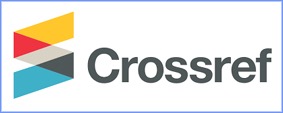Peran Guru dalam Pembelajaran Membaca dan Menulis Siswa SD Kelas Rendah
DOI:
https://doi.org/10.29240/estetik.v6i2.8053Keywords:
Teacher's Role, Read and Write, LearningAbstract
This research was carried out at SDN 06 Rejang Lebong in the second semester. The problem identified in this research was the lack of reading and writing skills among lower class students. Aims to describe reading errors and writing difficulties in lower grade students and describe the role of teachers in improving reading and writing skills in elementary school students. Using a qualitative approach with the type of research being descriptive. The subjects of this research were the school principal, teacher council, and lower grade teacher. Data collection by observation, interviews and documentation. Data analysis uses three stages consisting of data reduction, data presentation, and drawing conclusions. Inspection or checking the validity of the data is carried out using technical triangulation and source triangulation. The results of the research show that the forms of reading errors in lower grade students are children's difficulty recognizing the letters of the alphabet, errors in reading each word, and errors in pronunciation of words and use of lip movements. Meanwhile, the forms of writing errors include errors in writing words or sentences and errors in writing numbers. The role of the teacher in improving the reading and writing skills of low grade students includes: (1) the teacher acts as a demonstrator in learning activities, (2) the teacher acts as a class manager, (3) the teacher acts as a learning mediator, (4) the teacher acts as a facilitator in learning (5) )teachers also act as motivators for students. Things that hinder teachers' efforts include student motivation, student interest in learning, students' seriousness in learning and teachers' learning methods that are still contextual, as well as things that support the teacher's role include adequate school facilities and support from the school principal in learning.
Downloads
References
Asnita, Umul Khair, 2020, Penerapan Model Pembelajaran Time Token untuk Meningkatkan Keterampilan Berbicara Siswa, Estetik Jurnal Bahasa Indonesia, Vol 3, No 1
Jamaris, Martini, Kesulitan Belajar Perspektif, Assessmen dan Penanggulanganya Jakarta: Yayasan Penamas Murni, 2009.
Mulyasa, E, Standar Kompetensi dan Sertifikasi Guru, Bandung: PT, Remaja Rosdakarya Offset, 2007.
Mulyadi, Bimbingan Konseling Di Sekolah& Madrasah, Jakarta: Prenadamedia Group, 2016.
Sari, Rini, Puspita, Psikologi Pendidikan, Curup: LP2 STAIN Curup, 2013.
Sabri, Ahmad, Strategi Belajar Mengajar, Ciputat: Quantum Teaching, 2010.
Sanjaya, Wina, Strategi Pembelajaran Berorientasi Standar Proses Pendidikan, Jakarta: Kencana Prenada Media, 2011.
Sardiman, Interaksi & Motivasi Belajar Mengajar, Jakarta: Rajawali Pers, 2011.
Wawancara. Andriansyah S.Pd.I guru SDN 06 Rejang Lebong , Senin 02 Desember 2019
Wawancara. Siti Rohani, S.Pd.I Wali Kelas II, Senin, 03 Agustus 2020 Pukul 10:20 WIB
Wawancara. Mahdalia, S.Pd Wali Kelas III, Rabu, 17 Juni 2020 Pukul 09:30 WIB
Wawancara. Ardi Sugandi,S.Pd, Waka Kesiswaan, Selasa, 30 Juni 2020 Pukul 09:30
Downloads
Published
How to Cite
Issue
Section
Citation Check
License
Copyright (c) 2023 Ummul Khair, Kholik Kholik

This work is licensed under a Creative Commons Attribution-NonCommercial-ShareAlike 4.0 International License.
Authors who publish with ESTETIK : Jurnal Bahasa Indonesia agree to the following terms:
- Authors retain copyright and grant the journal right of first publication with the work simultaneously licensed under a Creative Commons Attribution-NonCommercial-ShareAlike 4.0 International License (CC BY-NC-SA 4.0) that allows others to share the work with an acknowledgment of the work's authorship and initial publication in this journal.
- Authors are able to enter into separate, additional contractual arrangements for the non-exclusive distribution of the journal's published version of the work (e.g., post it to an institutional repository or publish it in a book), with an acknowledgment of its initial publication in this journal.
- Authors are permitted and encouraged to post their work online (e.g., in institutional repositories or on their website) prior to and during the submission process, as it can lead to productive exchanges, as well as earlier and greater citation of published work (See The Effect of Open Access).







